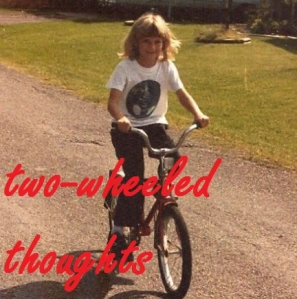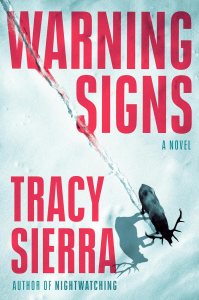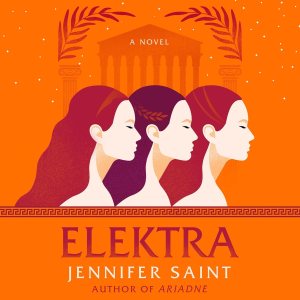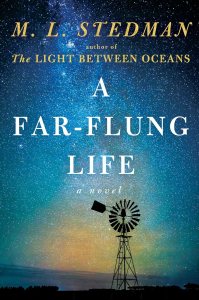Following Friday’s review of A Far-Flung Life, here’s M.L. Stedman: Capturing the Vast Sweep of Events.
M.L. Stedman was born and raised in Western Australia and now lives in London. The Light Between Oceans was her first novel. Her second, A Far-Flung Life (Scribner, March 3, 2026), examines tragedy, memory, loss, secrets, and the power of love in a family saga set against the vast, stark landscape of a Western Australia sheep station.
Where does the germ of such an expansive plot begin?

M.L. Stedman
(photo: Johnnie Pakington)
It’s different for everyone. I don’t plan what I write–it just sort of turns up, from an image in my mind’s eye, or a random thought. Setting is always crucial for me, too, and Western Australia is a natural place for my stories to arise. I’m drawn to intractable problems, which, because they have no “right” answer, force us to examine our underlying values: as with
The Light Between Oceans, there are knotty ones at the centre of this book.
I wrote the story over a very, very long time, and it just sort of grew and took shape organically over years. Characters turned up bit by bit, out of nowhere: they might be prompted by seeing a face, or hearing a phrase, or sometimes, they just materialised when I started to imagine a scene. The process is quite mysterious to me.
How was the process or experience of this novel different for you from your first?
The biggest difference was the time it took–I wrote my first book in about three years or so. It was harder to find uninterrupted space to write once The Light Between Oceans was published. As to what’s changed–I’d say the whole world. From that point of view, it was a great luxury to spend so much time in the remote imaginary setting I’d created, where e-mails and smartphones didn’t exist, “far from the madding crowd.”
Do you have any organizational tricks, for plot or timeline, for example?
When it comes to writing, I’m both organised, and not organised. I’m organised in that I set aside time for it–being at your desk increases the chances of actually writing something. I’m not one of those writers (whom I envy), who can say “I’ve got a spare hour between festival events, so I’ll write a few pages of my novel.” I need long, uninterrupted stretches.
I think it’s important to find out how you write best, and do that: if you’re a planner, plan. If (like me) you’re not, and story turns up as your fingers hit the keyboard, don’t fret about the lack of a plan. I don’t write in chronological order. Often, scenes aren’t remotely linked, and then, with time, like mushrooms underground, little connections form by themselves and suddenly things fit together. It’s risky, of course–you have to be prepared to discard strands that turn out to be dead ends. But in discarding, and discovering what the story is not, you narrow down what the story is. For me, the trick is to stay, to wait, and to trust.
Is “forgetment,” for “the opposite of a memory,” your own coinage?
The concept of “forgetment” is foundational to the book. Anyone who spends a long time thinking and writing about memory will probably eventually notice that there’s a word for things we remember (“memory”), but not one for things we forget. I came up with the word “forgetment,” but didn’t investigate beyond its absence in the Oxford dictionary. When I finally did Google it years later, it turned out–not surprisingly–that other people had thought of that word too.
I’m fascinated by how the “known now” becomes the “lost past.” In the book, there’s a reference to Sleeping Beauty, in which a whole castle disappears from memory. The fact that we accept that story so readily bespeaks how familiar we are with the process of “un-knowing.”
I’m also interested in the role of forgetting in forgiving (there’s a reason we say “forgive and forget”). Humans have been outsourcing memory since they first drew on cave walls. Writing supercharged this, and lately, technology has increased it exponentially, so that the most trivial things are now indelibly recorded and subject to instant recall, without context. Does this mean as a society we’re losing the ability to forget, or at least, as individuals, to choose what is remembered about our lives? If every fault or grudge or transgression remains fresh in our minds, does it diminish our ability to forgive?
Was the close third-person perspective, shifting between characters, always the plan, or did you play with a few points of view?
Writing in the third person comes most naturally to me. That said, I also think about the characters in the first person, seeing the world through their eyes. I’m very conscious of how characters see themselves and each other, and, in A Far-flung Life, how the omniscient narrator sees them all. We switch between the characters living their lives minute to minute, struggling through peril to an unknown future, and the omniscient narrator, who reminds us of the vast sweep of events in that timeless, imperturbable landscape. I find that “eternal” perspective reassuring, comforting.
What was the role of research in this novel?
Research is one of my favourite aspects of writing. For this book, I travelled a lot within Western Australia, read a lot, listened a lot: to people; to the sound of the wind in the trees and the night creatures of the Australian bush; above all, to the deep silence that envelopes the far-flung places I describe. I spent a long time in archives, exploring records that left my fingers covered in the red dust that filled the pages. I was incredibly fortunate to speak to pastoralists (like “ranchers” in the U.S.) and geologists and other people of the generation in which Australia “rode on the sheep’s back,” who recounted their stories and guided my research. I studied rocks and sheep (I even had a brief taste of shearing a wether, under very close supervision!). I visited various stations, sometimes hitching a ride on small aircraft visiting remote places, or delivering supplies to a station cut off by floods.
I must pay tribute to librarians and archivists, the unsung heroes keeping “forgetment” at bay. In this era of austerity and automation, I fear these quiet champions of knowledge are an endangered species. But computers could never replace their wisdom and enthusiasm.
What might you work on next?
Ha! If I knew, I might even tell you. But the ink is barely dry on this book. Once it makes its way out into the world, I’ll look forward to retreating to my imagination again, following up a few little threads of ideas, to see what they want to grow into.
This interview originally ran on October 30, 2025 as a Shelf Awareness special issue. To subscribe, click here, and you’ll receive two issues per week of book reviews and other bookish fun.
Filed under: interviews | Tagged: authors, Maximum Shelf, Shelf Awareness | Leave a comment »
















